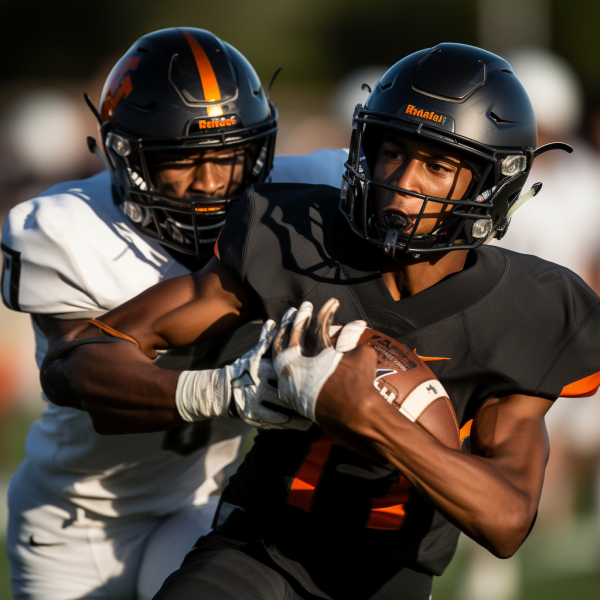Mailbag: What the ‘Pac-10’ want in the legal dispute, the Apple factor, night games in new leagues and more
The ‘Pac-2’ likely would be treated like Independents by the CFP
Every Friday, the Hotline mailbag is published. Send questions to pac12hotline@bayareanewsgroup.com with the subject line’mailbag’. Or follow me on Twitter at @WilnerHotline.
Please keep in mind that some of the questions have been edited for clarity and brevity.
Is it possible that the ten departing schools are simply stalling to ensure they receive their full 2023-24 payments, then quietly leaving once they realize they don’t have a case for future payments? — @Xman689
It seems the ‘Pac-10’ realized they left money behind and now want to come back to get it. In mediation, what would they reasonably be asking for and what, if anything, would the two be willing to give? — @pfnnewmedia
Both questions address a key issue in the intra-conference debate: What do the ten departing schools want? What do they hope to achieve?
achieve, whether through mediation or through legal proceedings in Washington? What is the goal?
First, let us sketch out the overall perspective of the Hotline.
We do not believe the ‘Pac-10’ has taken a punitive stance against Oregon State and Washington State. We disagree with the idea.
that they want to gut the conference and force the ‘Pac-2’ to join the Mountain West.
Of course, their actions left OSU and WSU stranded, but realignment is unforgiving, and schools do whatever it takes to survive. Saying goodbye does not always imply wishing someone bad luck.
They all want the Beavers and Cougars to succeed now that the collapse is official.
They do, however, want the divorce to be fair to both parties, and one issue in particular was recently raised by a Hotline source: the outgoing schools do not believe OSU and WSU should be allowed to keep all of the assets and then close the conference.
What are the chances of that happening?
The grant-of-rights term expires on August 1, 2024, so let’s use that as our reference point.
The ‘Pac-10’ wants to avoid the following scenario:
- Either through the lawsuit or mediation, OSU and WSU are allowed to keep all Pac-12 assets, which include more than $60 million in NCAA Tournament units and potentially two years of massive Rose Bowl and College Football Playoff revenue.
- On Aug. 1, 2024, the 10 schools announce they are officially leaving the conference.
- On Aug. 2, 2024, tens of millions of dollars in assets are transferred from the conference coffers to the OSU and WSU bank accounts.
- On Aug. 3, 2024, the Beavers and Cougars announce they are joining the Mountain West.
The outbound schools believe that outcome would be disastrous. There will undoubtedly be other sticking points in the negotiations, but we believe that scenario is the most important.
Also crucial is the College Football Playoff distribution strategy.
Revenue cannot be guaranteed. The CFP is awaiting the outcome of the Pac-12 legal dispute before making any changes to its policies.
format and financial models.
What scenario could satisfy both parties?
The ‘Pac-10’ cannot compel the ‘Pac-2’ to rebuild the conference or commit to a single scenario. Perhaps an equal division of whatever CFP is available.
Is revenue available — once again, this is unknown — for the 2024-25 seasons? We are only speculating.
The entire situation is unfortunate, and both parties are stressed. The ‘Pac-2’ need a resolution as soon as possible so they can plan for next season. Meanwhile, the ‘Pac-10’ are reluctant to reveal internal documents in discovery due to potentially sensitive information.
Their new conferences have improved communication.
What happens at the end?
It’s difficult to imagine the ‘Pac-10’ agreeing to let a judge in Whitman County, Washington, which includes Pullman, decide the fate of the Pac-10.
The gathering.
If mediation fails, several outbound schools may seek temporary restraining orders in their home states.
And if that’s the next step, a big mess gets even bigger.
Since it seems the ‘Pac-2’ are going to be considered Independents like Notre Dame next year, how does that work for the College Football Playoff? Do they need to finish in the top-12 in the rankings? — @brycetacoma
We would advise fans not to assume that Washington State and Oregon State will compete as a two-team conference next year.
That is one possibility, but there are obstacles ahead.
However, if the ‘Pac-2’ becomes a reality, the College Football Playoff will be eliminated.
Power brokers could strip the Beavers and Cougars of their Power Five status and treat them as either Independents or a Group of Five conference, with the former being more likely.
As Independents in the expanded playoff, they would gain entry via the at-large pool based on their final standings.
We anticipate that the redesigned format will award automatic bids to the top five conference champions and the top seven non-champions.
Because of the automatic bids, the Group of Five designation would be preferable, but as a two-team league, WSU and OSU are unlikely to receive it.
Are the Pac-12 Networks even meeting their contractual requirements? They constantly show reruns. Last Saturday, they didn’t even have a Pac-12 football game. And the ‘After Dark’ show is terrible, with three dudes kicked back on a sofa. — @Raimond80780510
This season, the networks will broadcast 850 live events.
meet the requirements of their distribution contracts and assure the money will keep flowing through the 2023-24 competition year.
The lack of football broadcasts on the Pac-12 Networks on Oct. 21 was due to the fact that all four games were shown on ESPN and Fox.
Unfortunately, the Pac-12 studio shows are no longer what they used to be.
Do you think Apple will pay to put the Pac-12 back together, and how much would they pay each school? — @crashlit
It’s certainly not out of the question.
If Apple wants to enter the college football space in a low-risk scenario while aiming for a much larger role in years to come,
Then an agreement with the ‘Pac-2’ could be appealing.
Alternatively, the company could bid for media rights to whatever conference emerges from the ‘Pac-2’ and Mountain West.
The latter’s current deal with CBS and Fox is set to expire in the spring of 2026. At that point, whether the schools compete under the banner of the MW or the Pac-12, there will be market interest in a medium-term rights agreement.
The revenue would be limited, possibly to a few million dollars per school per year. However, if Washington State and Oregon State gain access to Pac-12 assets, they will have some revenue flexibility, at least in the short term.
Has Oregon State ever been ranked first or second in the Hotline power rankings? — Dan N
Great question, and I don’t have an immediate answer.
With a few more victories or losses by the two teams (Washington and Oregon), the Beavers could move into one of the top spots.
positioned above them.
Jonathan Smith’s work is nothing short of remarkable, and his team now has a three-game season to create a two-game season to create a three-game season to create a three-game season to create a three-game season to create a three
Season of one game.
If the Beavers beat Arizona, Colorado, and Stanford, they will have one loss going into the double-whammy finish against Washington and Oregon, which will determine who plays in the conference championship.
Should Cal and Stanford fans expect more afternoon home games in the ACC? Or will the curse of regular “after-dark” kickoffs remain? I’m curious if the Big Ten’s West Coast additions will also play in daylight more often at home, starting in 2024. — @OrangeMarkD
Joining leagues in the Eastern and Central Time Zones does not mean the ten outgoing schools are done with night games.
kickoffs.
ESPN and Fox still require programming for late-night broadcast windows, and only schools in the Pacific and Mountain Time Zones can provide it.
Yes, the majority of road games will take place in the afternoon (Pacific time). However, expect many home games — or road games played in the west — to begin after dark.
In the case of Washington and Oregon, more Friday night home games are likely.
Fox refused to pay $65 million (approximately) per year to show the Huskies and Ducks during the crowded Saturday schedule.
Each school is likely to have two or three Friday home games per season.
Could ESPN have prevented Stanford, Cal, and SMU from joining the ACC if they really wanted to? — @JustR_02
ESPN’s contract with the ACC included a pro-rata clause, which required the network to pay the same rate for new members as it did for existing schools. In other words, each revenue pie slice would remain unchanged.
We can assume there was some wrangling over that clause, but the ACC clearly won.



